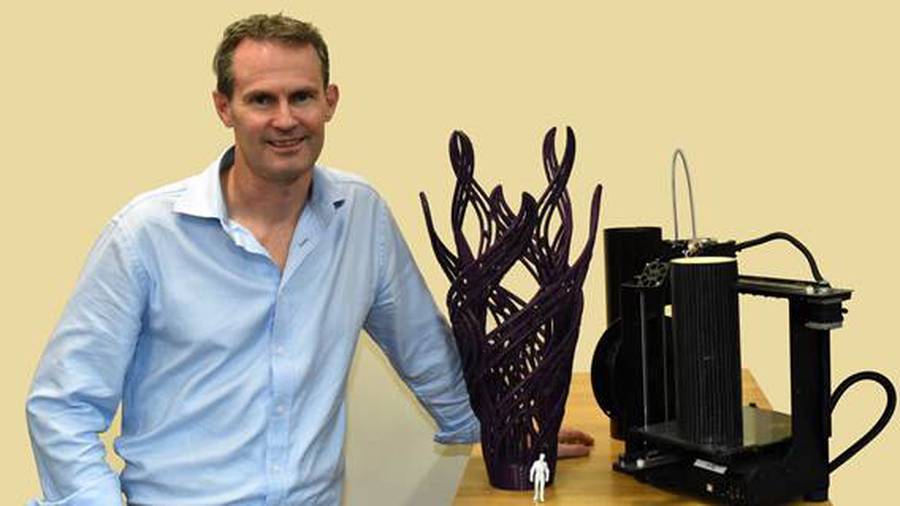A 12-meter, 1800-pound sculpture, inspired by Maori tradition, is to be 3D printed and placed outside Rotorua, New Zealand.
Imagine driving through lush, green countryside and coming upon a 12-meter whirlwind, both terrifying and majestic. That’s exactly what visitors to Rotorua, New Zealand are soon to see.
The sculpture, with its twisting, decorated tendrils, was designed by an artist from the New Zealand Maori Arts and Crafts Institute. Inspiration came from the Maori myth of high priest Ngatoro-i-rangi, who led his people to Aotearoa — in English, New Zealand.
In the story, Ngatoro-i-rangi’s wife becomes angered and summons a whirlpool that threatens to consume their ship, Te Arawa.
The monumental task will be taken on by local firm Kilwell Fibretube and will take nearly 16,500 hours to print. Conquering that mountain of time will involve 10 3D printers working 21 hours per day, seven days a week, for 79 days.
Assuming no complications arise, that should have the statue reaching for the sky by late August 2018.

Controversy in Rotorua
The statue was originally meant to be installed in July this year but was delayed because too few companies were capable and willing to construct it. Then again, that hardly comes as a surprise when you consider its size and complexity. And the fact that it was to be constructed in stainless steel!
That’s when Kilwell Fibretube stepped up to the plate, approaching Rotorua Lakes Council with an alternative plan. Stewart Brown, the council’s art and culture director, comments:
“Kilwell approached us so we’ve been working with them, alongside Te Puia/New Zealand Arts and Crafts Institute and Victoria University’s digital design lecturer Derek Kawiti. It’s a fantastic result — this is going to be very innovative and the fact it will be done locally is really great. The work will also create a few new jobs so that’s an added bonus.”
Instead of stainless steel, the statue will be made primarily of PLA with a carbon fiber coat. That’s over 63 kilometers of filament! As a result, the original 13-ton weight estimate drops down to just 1800 pounds.
Kilwell chief executive Craig Wilson is enthusiastic about the project:
“It’s fantastic to be able to showcase the work we do to our local community and be part of the sculpture that will welcome visitors to our city from the south.”
Source: Rotorua Daily Post
License: The text of "12-Meter Maori Sculpture to be 3D Printed in Rotorua, NZ" by All3DP is licensed under a Creative Commons Attribution 4.0 International License.